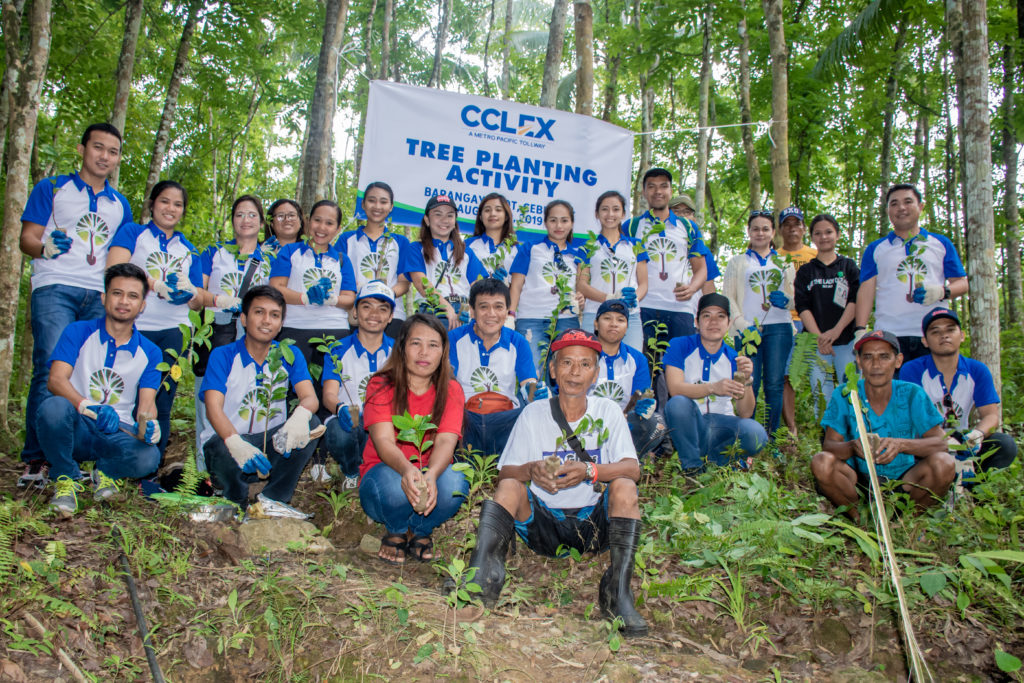
Cebu Cordova Link Expressway Corporation (CCLEC) employees planted guyabano seedlings in Barangay Buot, Cebu City in coordination with the Buot Livelihood Association Inc. (BULAI) and City Environment and Natural Resources Office (Cenro). | Contributed Photo
CEBU CITY, Philippines – The Cebu Cordova Link Expressway Corporation (CCLEC), owner and operator of Cebu-Cordova Link Expressway (CCLEX) project, mobilized its employees to Barangay Buot, Cebu City and planted guyabano seedlings with the officers and members of Buot Livelihood Association Inc. (BULAI) and Cebu City Environment and Natural Resources Office (Cenro) on August 10, 2019.
The company also partnered with Camp 4 Manipis Minglanilla To-ong Association (CAMMITA) Inc. for a reforestation program that involves the provision and planting of 66,561 indigenous forest and fruit trees in Manipis, Talisay City.
CAMMITA, which has 158 members, will ensure that the planted trees in the area are well-maintained and protected until fully grown.
CAMMITA is an accredited people’s organization (PO) of the Department of Environment and Natural Resources (DENR) in ecological development and management of the Central Cebu Protected Landscape for the past 21 years in line with the government’s National Greening Program (NGP).
BULAI, also a people’s organization duly accredited by DENR, was tapped by CCLEC as its partner for its employees’ tree planting activity and will guard and nurture the 500 guyabano seedlings planted in Barangay Buot until they are fully grown.
“This is CCLEC’s way of contributing for the protection of the environment. We are also ecstatic with our reforestation program because aside from helping increase Cebu’s water supply, enhance biodiversity and mitigate climate change, it will also help provide livelihood for the people’s organization that we engaged for the project,” said CCLEC Project Manager Herbert C. Laboy, who led the employees in the activity. | dcb